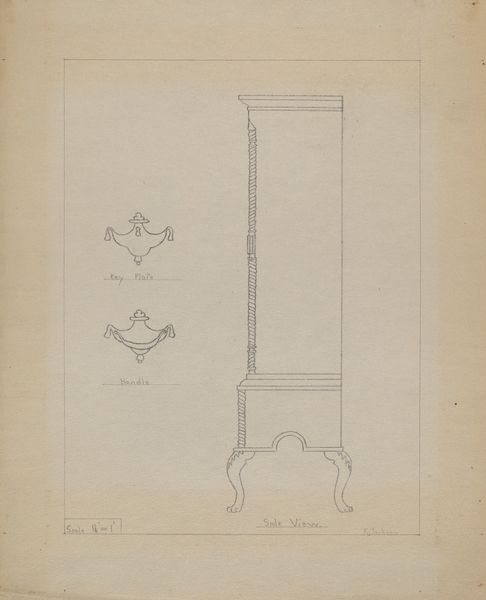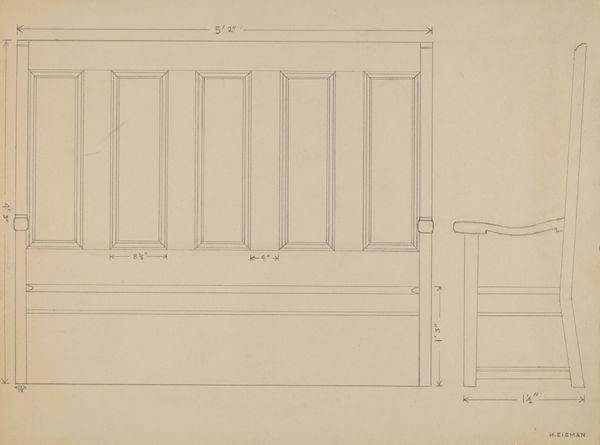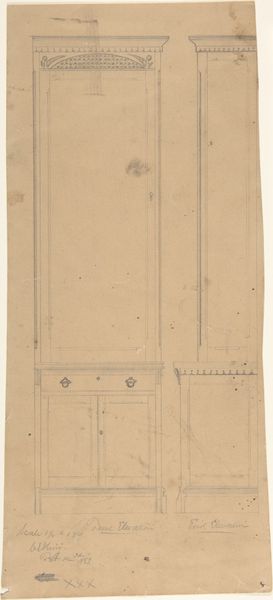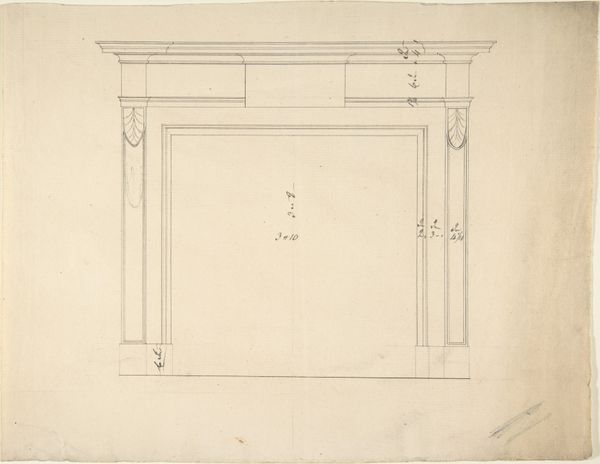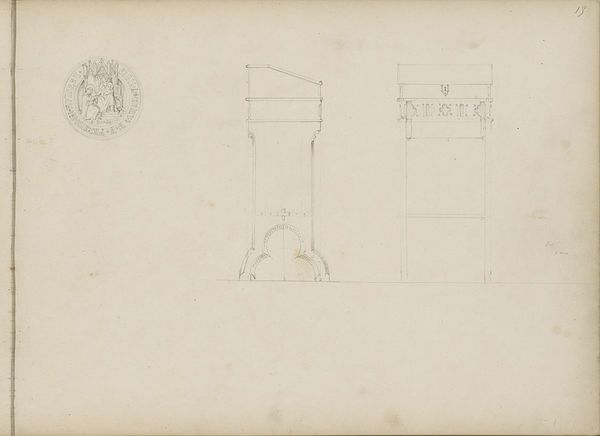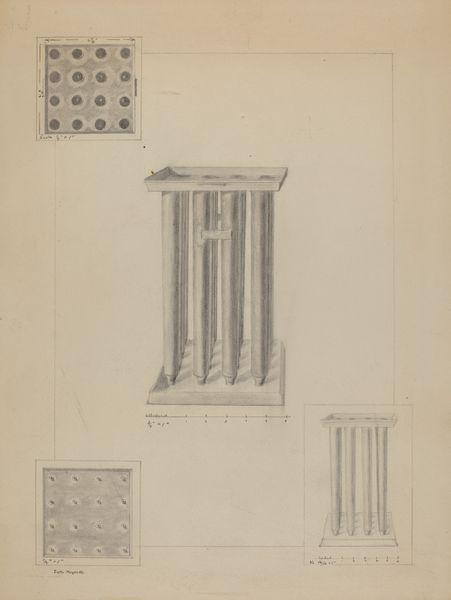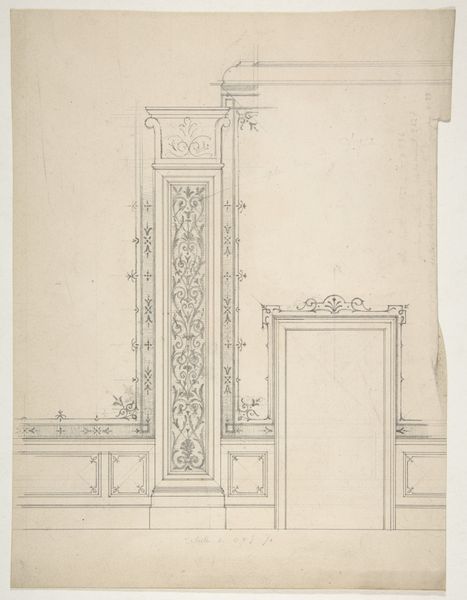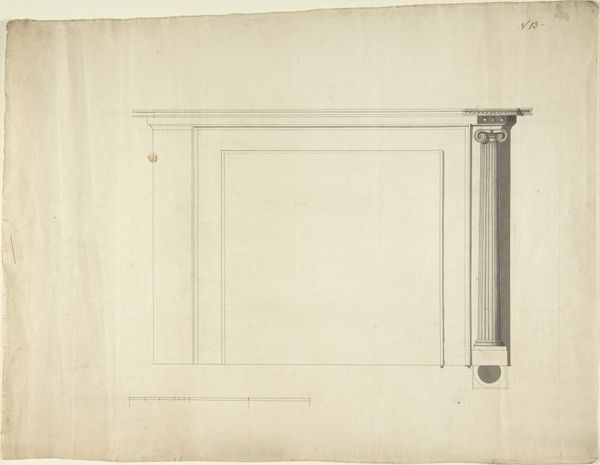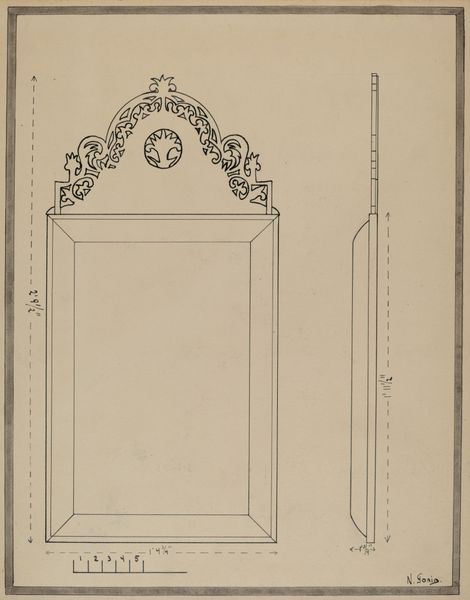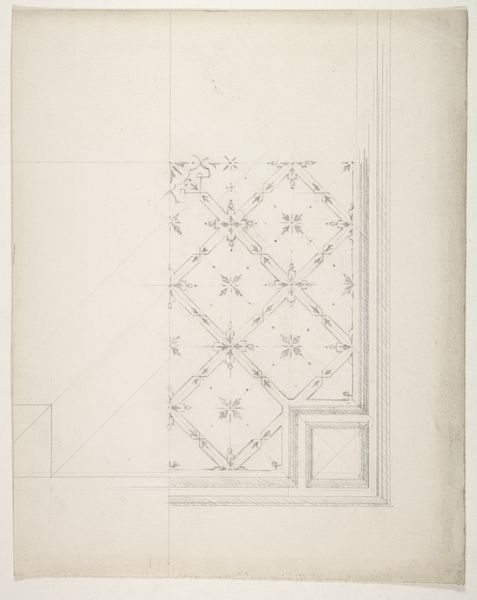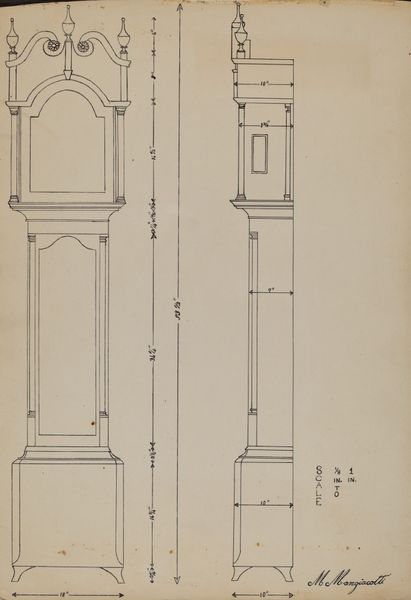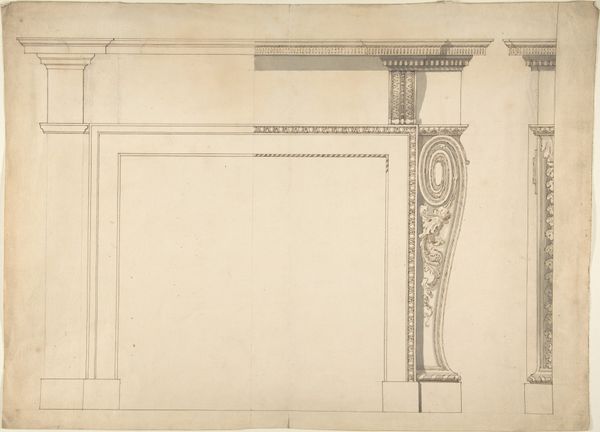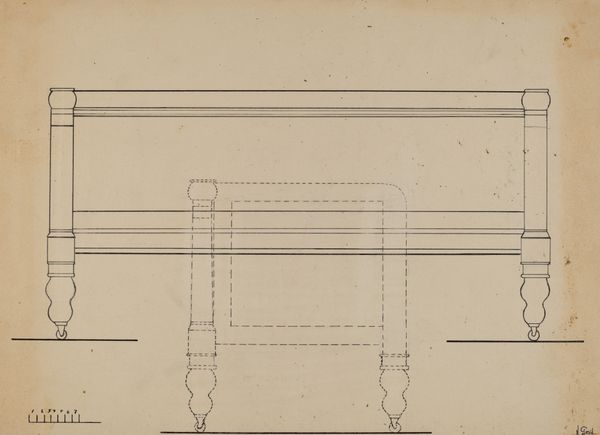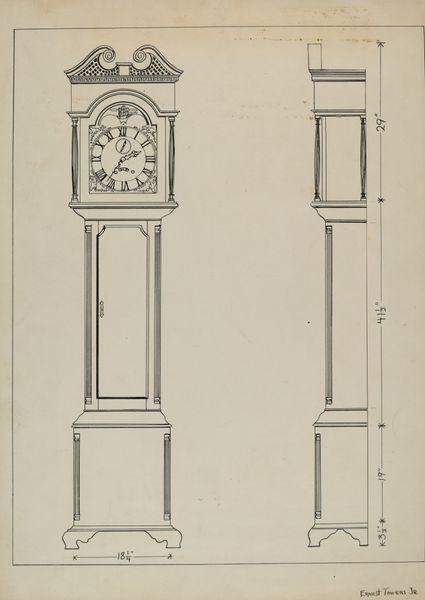
drawing, paper, pencil
#
drawing
#
paper
#
form
#
geometric
#
pencil
#
line
Dimensions: overall: 36.9 x 26.1 cm (14 1/2 x 10 1/4 in.) Original IAD Object: 82"high; 54"wide; 19 1/2"deep
Copyright: National Gallery of Art: CC0 1.0
Editor: We're looking at "Wardrobe," a drawing by George Fairbanks from around 1937, made with pencil on paper. It features geometric forms of a wardrobe, laid out like a technical drawing. What strikes me is how functional and purely representational it seems. What do you see in this piece, from a formal perspective? Curator: The line work immediately grabs my attention. Note the artist’s precise application. Each line defines form, delineating edges and volumes. It’s an exercise in geometric purity, wouldn't you agree? Consider the absence of shading. It encourages the viewer to focus solely on the underlying structure and its relationships. Editor: That's a good point. I was initially seeing it as a very straightforward image, but focusing on the *lack* of embellishment really does shift my perspective. Do you think the separation of views contributes to this emphasis on form? Curator: Precisely. The front and side views are segmented and juxtaposed. How does that affect your reading of the wardrobe’s design? Is the relationship more dynamic, or are the structural facets enhanced? Editor: I see how that separation clarifies the structure because you see all its faces, but it also disrupts the object’s unity. It exists only as constituent parts on the page, instead of the 'whole' wardrobe in its natural environment. Curator: That tension—between the analytic clarity and the disruption of wholeness—is the key. We, as the audience, are encouraged to observe and interpret that specific tension to understand the very formal values inherent in this work. What do you take away? Editor: This piece has really highlighted how even technical drawings can be compelling in their structure and line work. Thinking about the artist's decisions about what *not* to include is surprisingly helpful. Curator: Absolutely. Focusing on these artistic choices and formal tensions allows for richer engagement.
Comments
No comments
Be the first to comment and join the conversation on the ultimate creative platform.
